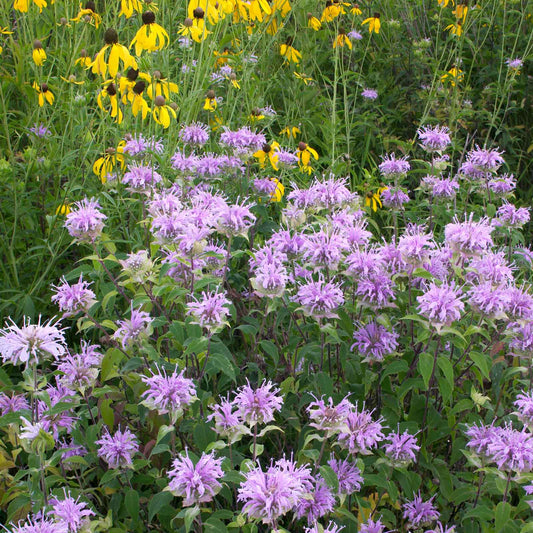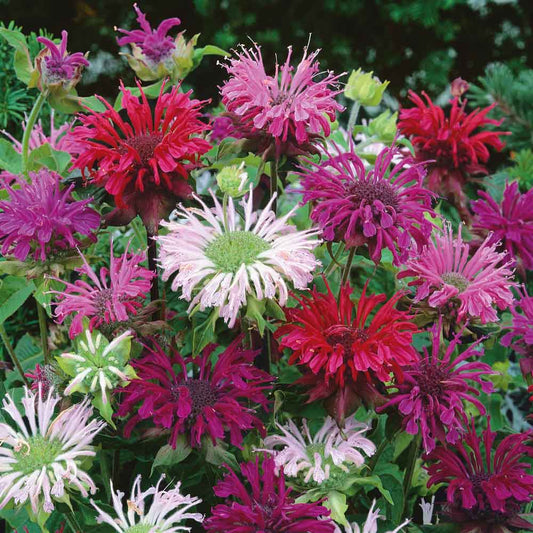-
main-collection-product-grid

Bee Balm Seeds - Wild Bergamot
This thistle-like wildflower is the preferred bloom of bees everywhereBee Balm Seeds - Wild Bergamot
This thistle-like wildflower is the preferred bloom of bees everywhereRegular price As Low As $5.99Regular priceUnit price per -
main-collection-product-grid

Bee Balm Seeds - Mix
Colorful blooms with a delightful fragranceBee Balm Seeds - Mix
Colorful blooms with a delightful fragranceRegular price $6.99Regular priceUnit price per
What to know about bee balm
- The plant of choice for pollinator gardens
- Also known as wild bergamot
- Tubular petals with aromatic foliage
Bee Balm is Low-Maintenance and Lovely
Provided with the ideal growing conditions, bee balm plants are low-maintenance. They thrive in loamy and moist soil, with ample sunshine, and with regular watering. Allow plenty of room between plantings to prevent powdery mildew, a disease that can affect bee balm—good airflow is critical for its fragrant and colorful blooms!
Features of Bee Balm
Adding a touch of brightness and wildness to mixed bouquets, bee balm is a delightful edible flower and native medicinal herb. As an easy-to-grow and vigorous native nectar plant, it is a magnet for bees, butterflies, and hummingbirds in your pollinator garden. We offer perennial bee balm seed varieties, including Monarda didyma, and Monarda fistulosa. The Monarda fistulosa variety is particularly preferred for its healing properties.
Bee Balm Care and Maintenance
If you desire a bushier appearance from your bee balm plant, we recommend light annual pruning. Simply pinch off the stem tips in the spring. During the fall season, cut the plant down to a few inches in height to encourage new growth the following spring.
Once your bee balm plant is established, you can propagate it through division and cuttings. Dividing the plant is the simplest way to propagate it, thanks to its abundant growth. Additionally, performing this task every few years can promote the plant's wellbeing and fullness. You’ll dig up the entire root system and gently lift the plant up from the ground. Once removed, use a shovel and clippers to divide the plant into multiple sections, removing any woody sections. Replant these sections in your desired locations, amending the soil with compost or a well-balanced fertilizer.
While bee balm is a fast-spreading plant that can overtake a garden, it is not considered invasive as it is native to North America.

